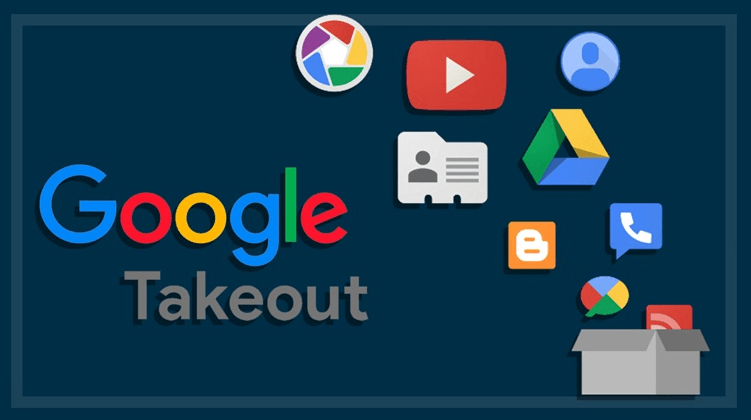Wondering how to import takeout data to new Gmail account? This complete walkthrough helps you transfer your data with ease using Google Takeout files. Learn how to restore your emails, calendar, and contacts from an old account to a fresh Gmail inbox.

Ever hit that “Download your data” button in Google Takeout, only to stare at the downloaded file later wondering—“Now what?” If you’ve downloaded your Gmail data using Google Takeout and want it back into Gmail, you're not alone. This guide will walk you through the process step-by-step, in plain English. Let’s make importing that Takeout data as painless as possible.
Google Takeout is a nifty tool that lets you download a copy of everything Google knows about you—or at least, the data you’ve created while using their services.

Why Google Takeout Exists
Imagine if Google accidentally lost your data (highly unlikely, but possible), or you decide to leave Gmail. You’d want a backup, right? That’s where Takeout comes in—it hands over your data in downloadable chunks.
What Kind of Data You Get
From Google Drive files to your browsing history, it’s all there. But for Gmail specifically, Takeout gives you a .mbox file—a giant digital suitcase stuffed with all your emails.
There are several reasons why you might want to import Google Takeout data to Gmail:
Whatever the reason, it’s good to know how to restore what you’ve downloaded.
Before we dive into importing, it’s important to understand what Gmail can and cannot handle directly.
File Formats You’ll Encounter
The email portion of your Takeout archive will be in the MBOX format. This is a universal format for email storage, but Gmail doesn’t let you directly upload an MBOX file. Boo, I know.
What Gmail Accepts and What It Doesn’t
Gmail can’t natively import .mbox files. But don’t worry—we’ll use a third-party tool to bridge the gap.
Here’s where we roll up our sleeves.
Go to Google Takeout, sign in, and choose the data you want.
Choosing the Right Data
Select only Gmail to avoid a monster file with things you don’t need.
Export Settings: Format and Frequency
Once downloaded, unzip the archive. Inside, you’ll find folders for each service.
That’s the file we want!
The .mbox file will usually be named like this: All mail including Spam and Trash.mbox
Pro tip: If you’ve renamed it, just make sure it ends in .mbox.
Gmail doesn’t let you drag and drop an .mbox file into your inbox. That would be too easy. Here’s what you can do.
Mozilla Thunderbird (Free Option)
1. Download and install Mozilla Thunderbird
2. Install the ImportExportTools NG add-on.
3. Add your Gmail account to Thunderbird using IMAP.
4. Import the .mbox file into Thunderbird.
5. Drag and drop emails into your Gmail folders.
It’s not quick, but it works like a charm.
Aid4Mail or SysTools MBOX Converter (Paid Options)
These paid tools streamline the process:
If you're an admin, you can use Google Workspace migration tools to upload MBOX files to user accounts.
Convert .mbox to .pst (using tools like Aid4Mail), then:
1. Open PST in Outlook.
2. Sync Outlook with your Gmail via IMAP.
3. Move emails to Gmail folders.
Contacts: CSV File Method
1. Go to Gmail > Contacts.
2. Click Import, select your .csv file from Takeout.
Calendar: ICS File Method
1. Open Google Calendar.
2. Click the gear icon > Settings > Import & Export.
3. Import your .ics file.
Google Drive Files
Just upload them to your new Google Drive using drag-and-drop or Google Drive's upload feature.
Bringing your Takeout data back into Gmail isn’t exactly plug-and-play, but it’s definitely doable. With a bit of patience and the right tools, you can get your emails back where they belong. So go ahead—don’t let those memories stay zipped up forever. Get them back into your inbox and breathe new life into old emails!
From above, we know that Google Takeout can help export mail data from one Gmail account to another. Luckily, there is a very simple way if you just want to migrate data in Google Drive or Google Photos to another account. That is using MultCloud, a famous and powerful cloud-to-cloud transfer tool. It saves the process of manually exporting and importing Google Takeout data from one Gmail account to another.
Instead, it is able to directly migrate files from one Google Drive / Google Photos account to another account, even another cloud service, without passing through the local space. Besides, it executes the task relying on the MultCloud's server as long as you initiate the task, so you can close the browser or even the device, and it will continue in the background.